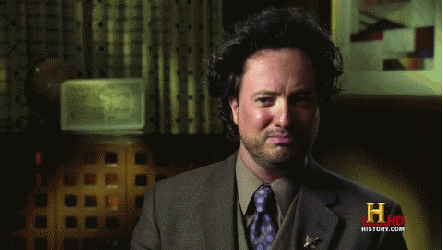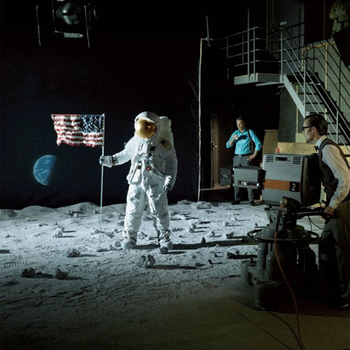
I’m sure it can plant a detachable satellite camera. It would be a no-brainer, considering all the other things they can do.

Selfie stick?
Intergalactic selfie-stick!
Is the final connection with the camera simply too close to focus on?
I think maybe so. You see there is a protrusion out to almost where the camera is, I think the final attachment is simply too close to focus on.
(my guess)

Per NASA’s website.... http://www.nasa.gov/mission_pages/msl/multimedia/gallery-indexEvents.html#lowerAccordion-set1-slide8 “The view does not include the rover’s robotic arm. Wrist motions and turret rotations on the arm allowed MAHLI to acquire the mosaic’s component images. The arm was positioned out of the shot in the images, or portions of images, that were used in this mosaic. This process was used previously in acquiring and assembling Curiosity self-portraits taken at sample-collection sites “Rocknest””
The image you’re seeing here is part of a larger panorama also available in the gallery below {at link}. This image was captured with Curiosity’s Mars Hand Lens Imager (MAHLI) earlier this month and attained by NASA this week.
The image you’re seeing here was not taken with a “Selfie Stick”, but it may as well have been. Instead of a stick reserved only for taking photos of one’s self, this robotic arm houses the camera Curiosity uses to take all photos, forwards and backwards alike.
http://mars.nasa.gov/msl/mission/instruments/
http://mars.nasa.gov/msl/mission/instruments/cameras/mahli/
Obviously it had to be taken with an external camera. Probably deployed by Curiosity.

According to most Ron Paul supporters.
1. Curiosity has a long multisegment “arm” with a number of instruments, including a camera, attached. The arm isn’t as long as it appears here, but I’ll explain that below.
2. Extend the long arm out, and start by taking a picture back of Curiosity itself.
3. Using the multisegment arm, rotate the camera, keeping the center of the lens in the same exact location in x, y, and z, and take another picture looking in a different direction.
4. Repeat step 3, keeping some “overlap” between each image, until you have captured the entire view 360° all the way around, up, and down.
5. Send images back to earth, and use a computer program to “weld” all the images together into a seamless “globe”.
6. Transform that globe into a rectangle view. Remember how a flat map of the entire earth is done by taking the spherical globe and applying (one of many) transforms to turn it into a flat rectangle? That’s exactly what is going on here.
7. The rover looks further away than it really is because of all the other view information crammed into this picture. It isn’t far away, it is small (and distorted) because we’re looking at 360° of picture information crammed into what we expect to be a normal picture.
that headline says “wet patch”?
AFAIK no liquid water can exist on the surface
Could be a picture taken of a mirrored ball.
Ask Stanley Kubrick.
Selfie-stick. No, really. The camera is attached.
Universal Studios can do ANYTHING!!!
From another source:
The 1-ton Curiosity rover snapped several low-angle shots with the camera at the end of its robotic arm on Aug. 5, at a site called Marias Pass in the foothills of the 3.4-mile-high (5.5 kilometers) Mount Sharp. Mission team members then stitched those photos together into the amazing selfie, which NASA released Tuesday (Aug. 18).